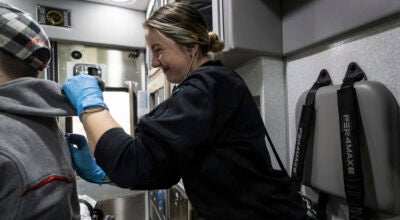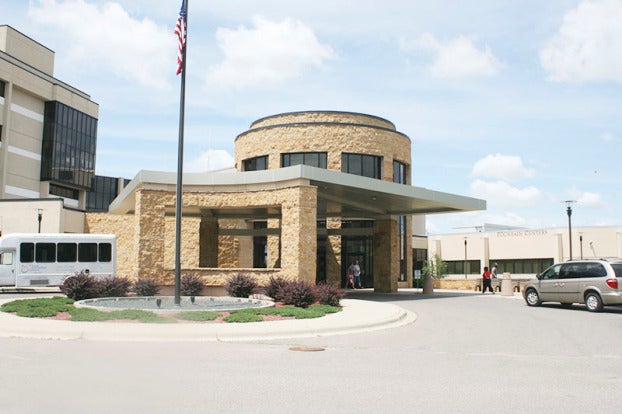Music therapy used to help people through end-of-life journeys
Published 5:20 pm Tuesday, November 3, 2020
|
Getting your Trinity Audio player ready...
|
In the practice of hospice care, music has been found to have a profound impact in the lives of patients, families and medical staff.
Christina Wood and Emma Evans-Peck are music therapists with Mayo Clinic’s hospice program, and Renae Meaney is a registered nurse and is the supervisor of the hospice program for Mayo Clinic Health System in Albert Lea and Austin.
Both Wood and Evans-Peck said music therapy has proven to help with pain management, relaxation and coping mechanisms. Live music is used in the practice, and most often through guitar playing and singing.
The music therapy services were paused for the first part of the COVID-19 pandemic, but were reopened last week. New procedures are in place, including therapists wearing masks and social distancing, and the number of family members visiting being limited in situations where the patient isn’t in their own home. Wood said they are being cautious, but are happy to be able to provide that support for patients and families as well as medical staff and hospice teams.
Wood said the pandemic has encouraged them to leverage their technology a lot more, using video chats or phone calls more to facilitate therapy. Evans-Peck said there was an instance where a patient’s aunt called multiple family members out of state to have them participate in the music therapy as well.
Evans-Peck said that music therapy can help in end-of-life care when patients or loved ones don’t always have as much to say, or are experiencing too much grief for words. She said playing a patient’s favorite music genre or songs they grew up listening to can help patients take their minds off of pain or other issues. Playing songs that are meaningful to patients and their loved ones offer additional touching moments as well.
Both Wood and Evans-Peck pursued careers in music therapy after having loved ones go through hospice; for Evans-Peck it was her grandfather and for Wood it was her grandmother. Wood said she realized how powerful music could be through witnessing how it affected her grandmother.
“It helps provide perspective,” Wood said. “You have compassion and empathy that everyone’s end-of-life journey is different.”
“There’s a lot of emotions that can be conveyed through music,” Evans-Peck said.
Meaney said she has seen firsthand how music therapy has impacted patients, whether they’re elderly individuals, children or somewhere in between.
“I have witnessed the power music therapy has had to relieve symptoms,” she said. “… I’m so honored to have this service available to patients again.”
Wood said music therapists look at the big picture when it comes to planning music therapy for each patient. They use music as a tool to help not only patients, but loved ones and medical and support staff.
“The really beautiful thing about music is there’s a secondary effect in the room,” she said.
Wood said they sometimes record a patient’s heartbeat and use it as a kind of drumbeat during music therapy as well. They will then record the session and give it to the patient’s family as a legacy gift.
“It’s all about the quality of life, not the number of days,” she said. “… It’s all worth it.”




